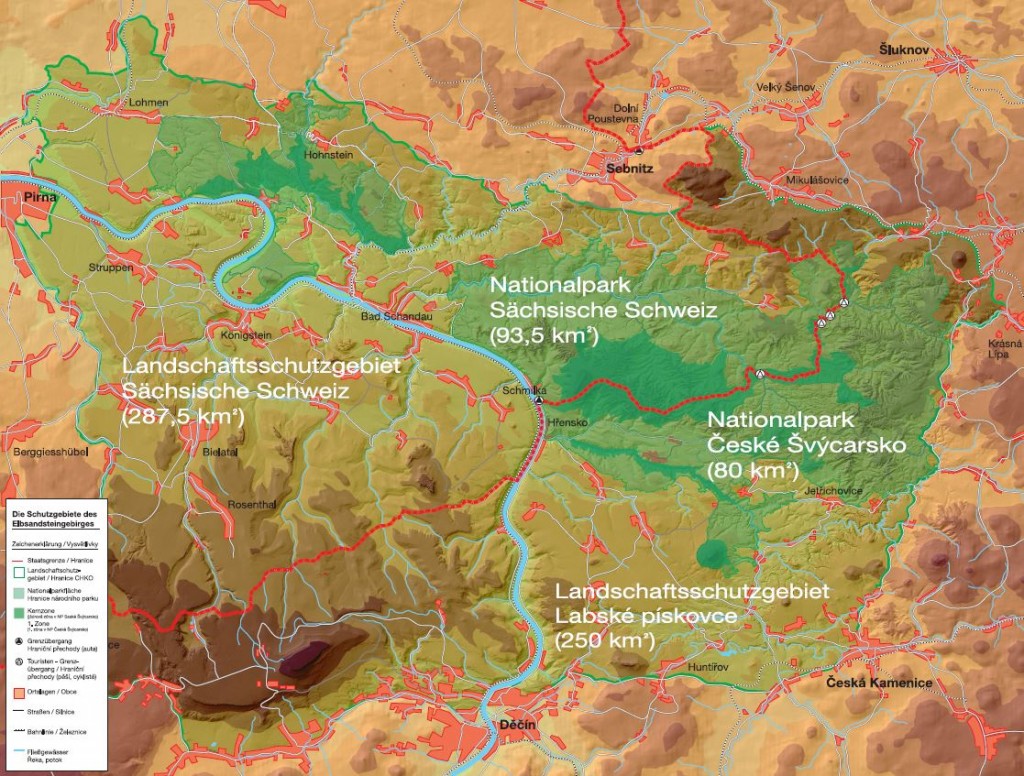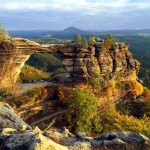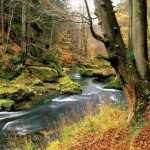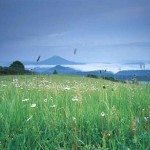One Landscape – Four Protected Areas
The Bohemian Switzerland National Park (Národní park České Švýcarsko)
 In 2000 the Bohemian Switzerland National Park was founded as the fourth and youngest national park in the Czech Republic. In precious woods, rocky landscapes, deep gorges and narrow river valleys as much as around broad mesas and basaltic volcanic mountains, the natural environment can flourish in an area extending across 80 km². The unique Prebischtor (Pravčická brána) – the largest sandstone gate in Europe – has symbolic value for the conservation area. The central information point of the national park – the home of Bohemian Switzerland – is located in Krásná Lípa (Schönlinde). In an interactive exhibition you can learn everything there is to know about Bohemian Switzerland. You will find further information centres along our hiking trails: In Saula near Dolní Chřibská, in Jetřichovice, in Srbská Kamenice and in Hřensko. Under places of interest you will find a selection of tours in the Bohemian Switzerland National Park.
In 2000 the Bohemian Switzerland National Park was founded as the fourth and youngest national park in the Czech Republic. In precious woods, rocky landscapes, deep gorges and narrow river valleys as much as around broad mesas and basaltic volcanic mountains, the natural environment can flourish in an area extending across 80 km². The unique Prebischtor (Pravčická brána) – the largest sandstone gate in Europe – has symbolic value for the conservation area. The central information point of the national park – the home of Bohemian Switzerland – is located in Krásná Lípa (Schönlinde). In an interactive exhibition you can learn everything there is to know about Bohemian Switzerland. You will find further information centres along our hiking trails: In Saula near Dolní Chřibská, in Jetřichovice, in Srbská Kamenice and in Hřensko. Under places of interest you will find a selection of tours in the Bohemian Switzerland National Park.
The Elbe Sandstone Mountains Conservation Area (CHKO Labské pískovce)
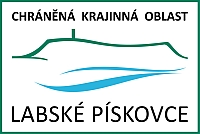 In 1972, when the Elbe Sandstone Mountains Conservation Area was founded, it stretched across an area of 324 km². In 2000 some sections of that area became part of the newly established national park, so that the total of the conservation area currently amounts to 245 km². It is located in northern Bohemia in the districts of Děčín and Ústí nad Labem. The objective of the Elbe Sandstone Mountains Conservation Area is to preserve the natural heritage, beauty and regional characteristics and to create a natural environment. The administrative headquarters and information centre of the conservation area are located in Děčín. Another information point is situated in Tisá, where you will find the unique rock labyrinth of the Tyssa Walls.
In 1972, when the Elbe Sandstone Mountains Conservation Area was founded, it stretched across an area of 324 km². In 2000 some sections of that area became part of the newly established national park, so that the total of the conservation area currently amounts to 245 km². It is located in northern Bohemia in the districts of Děčín and Ústí nad Labem. The objective of the Elbe Sandstone Mountains Conservation Area is to preserve the natural heritage, beauty and regional characteristics and to create a natural environment. The administrative headquarters and information centre of the conservation area are located in Děčín. Another information point is situated in Tisá, where you will find the unique rock labyrinth of the Tyssa Walls.
On Our Way to an InterNational Park
Our natural environment does not end at artificial, political borders. It is no surprise that the natural features on both sides of the border are very alike and Saxon-Bohemian Switzerland represents one entity of great value for natural conservation and tourism.
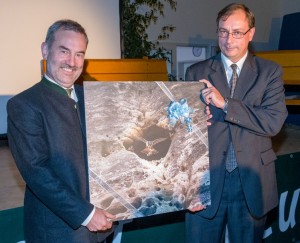
Exchanging gifts at the 25th anniversary celebration of Saxon Switzerland National Park: Pavel Benda (Head of the Bohemian National Park, r) is handing over a picture of a reintroduced peregrine falcon – a symbol of the cross-border cooperation – to Dr. Dietrich Butter (Director of Saxon Switzerland National Park).
Until the mid-15th century these hard-to-access forests and rocky landscapes of the Elbe Sandstone Mountains were part of the “Bohemian Woods”. The Treaty of Eger (1459) laid down the border between Bohemia and Saxony. Its course has remained largely unchanged throughout history and it did not prevent the relations between the dwellers on both sides of the border to flourish. This close relationship between Czechs and Germans, however, was heavily challenged and damaged in the 20th century. These effects are still evident today, despite some successful rapprochement efforts in the recent past. First efforts to establish large-scale, cross-border conservation date back to the 1940s (large-scale protection of the Elbe River basin between Leitmeritz and Riesa (1939/41)). From the second half of the 1950s, Bohemian and Saxon conservationists and regional planners tested the possibilities of cross-border nature and landscape protection. After the designation of the Saxon Switzerland Conservation Area (1956), the Czechoslovak side agreed to establish a conservation area in Bohemian Switzerland. It was to connect directly to the Saxon nature reserve along the border. This was achieved in 1972 with the designation of the LSG Labské pískovce (Elbe Sandstone Mountains). Subsequently a solid, professional and friendly relationship evolved between the head of the LSG Labské pískovce, Zdenek Řehák, and the Sebnitz District Conservation Officer Dietrich Graf, involving other actors of natural conservation too. At the opening of the Saxon Switzerland National Park the Minister of Environment of the ČSFR, Ivan Dejmal, announced the establishment of the “Bohemian Switzerland” National Park adjacent to the “rear section” of Saxon Switzerland National Park. The national parks on both sides of the border should also form a bridge between the people of Bohemia and Saxony in addition to protecting an inseparable landscape.
At the turn of the Millennium the vision of two cross-border national parks became reality. The changed political situation in the early 1990s created new perspectives for cross-border cooperation in nature conservation in Saxon and Bohemian Switzerland. Thus, a stable and lively, professional and friendly cooperation across state borders has developed with the support of the heads of sanctuaries Werner Hentschel (Labské pískovce Conservation Area) and Dr. Jürgen Stein (Saxon Switzerland National Park) as well as the staff of the conservation administration. The objective of this cooperation is the coordinated, cross-border care and development of the two national parks and conservation areas of Saxon and Bohemian Switzerland. Furthermore, the cooperation aims at a closer bond between residents and guests on both sides of the border. With their diverse, bilingual services the two national park visitor centres in Bad Schandau and Krásná Lípa contribute to a growing understanding and personal exchange in this border region. The environmental education of both national park administrations brings children and young people of both nations together while they experience nature.
F or visitors, the administrative cooperation can be clearly seen in the joint appearance of publications and information brochures. These are also used by both tourism organisations, thus expressing their cross-border solidarity.
or visitors, the administrative cooperation can be clearly seen in the joint appearance of publications and information brochures. These are also used by both tourism organisations, thus expressing their cross-border solidarity.
In October 2012, the protected area administrations in Saxon-Bohemian Switzerland were awarded the Europarc Federation Certificate for cross-border cooperation of Transboundary Parks. The certificate confirms a high level of administrative cooperation of the Saxon and Bohemian Switzerland National Parks and the Labské Pískovce Conservation Area in the care of their unique nature. Fundamental to receiving this certificate is the collaboration with key partners in this region, including local governments, clubs and national park partners.







